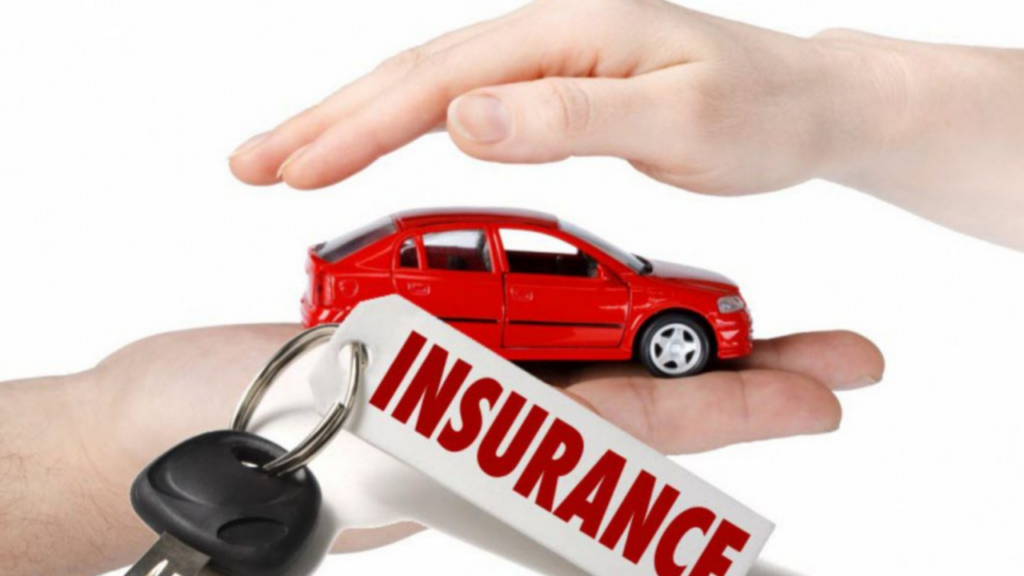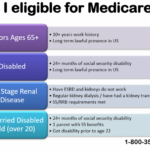What are the best ways to save money on auto insurance premiums? It’s a question every driver asks, especially with premiums seemingly climbing higher each year. This isn’t just about finding the cheapest policy; it’s about understanding how your driving habits, vehicle choices, and even your lifestyle impact your insurance costs. By making smart choices and understanding the intricacies of auto insurance, you can significantly reduce your premiums without sacrificing necessary coverage.
Let’s dive into the strategies that can save you serious cash.
From shopping around for the best deals and improving your driving record to selecting the right coverage and taking advantage of available discounts, there’s a wealth of information to uncover. We’ll explore various options, including bundling policies, opting for usage-based insurance, and understanding the impact of vehicle modifications. Get ready to become an auto insurance expert and reclaim some of your hard-earned money!
Shopping Around for Auto Insurance
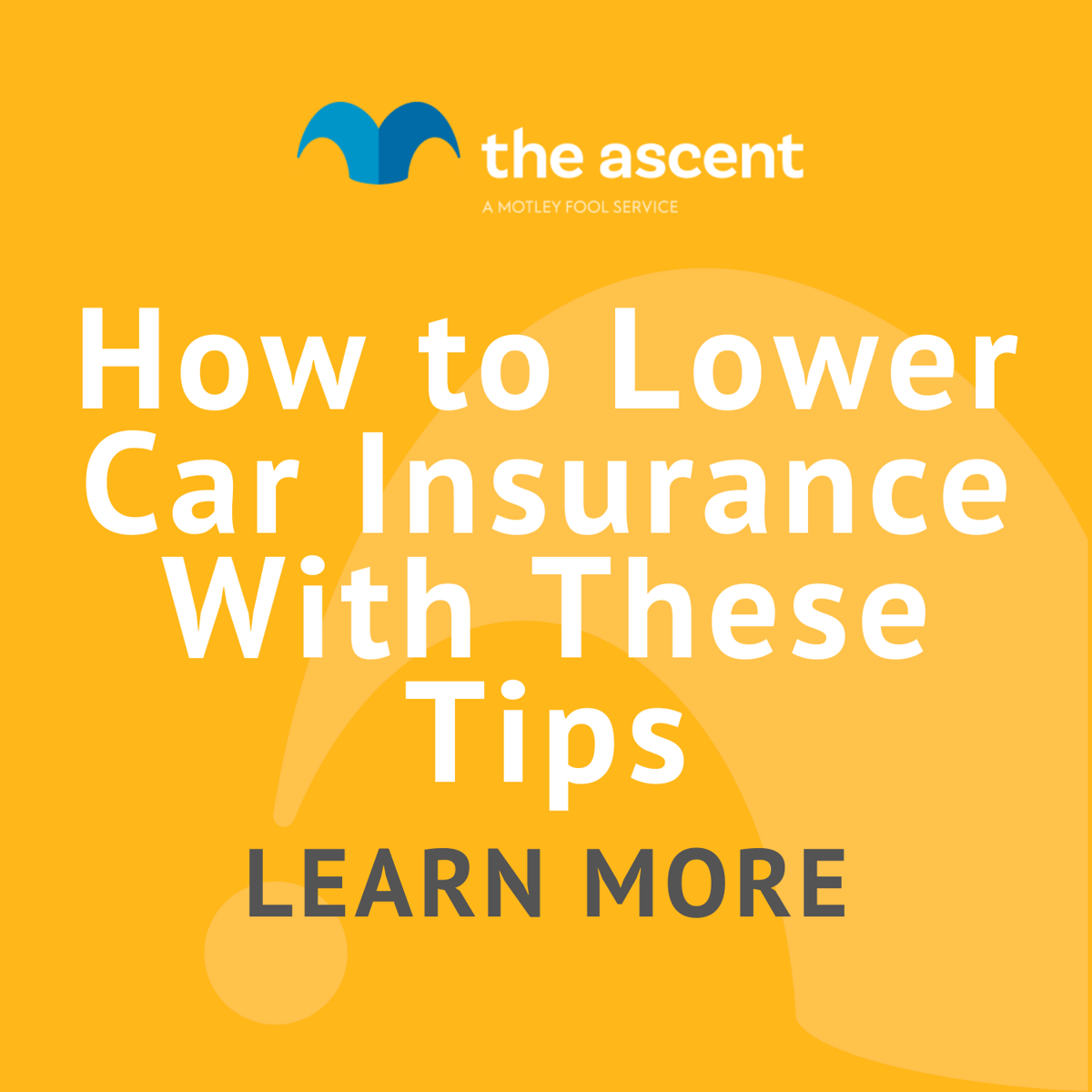
Saving money on car insurance often feels like navigating a maze, but one of the most effective strategies is surprisingly simple: shop around. Don’t settle for the first quote you receive. By comparing offers from multiple insurers, you can significantly reduce your premiums and find a policy that best suits your needs and budget. This involves understanding the different coverage options and how deductibles impact your overall cost.Comparing quotes from at least three different insurance providers is crucial for finding the best deal.
This allows you to see the variations in price, coverage, and deductibles offered by different companies. Remember, the cheapest option isn’t always the best; you need to consider the level of coverage provided.
Coverage Options Comparison
Different insurers offer varying levels of coverage, and understanding these differences is key to making an informed decision. The table below illustrates a hypothetical comparison of three major insurers – Insurer A, Insurer B, and Insurer C – showcasing their pricing for similar coverage levels. Note that these are illustrative examples and actual prices will vary based on individual factors like driving history, location, and vehicle type.
| Feature | Insurer A | Insurer B | Insurer C |
|---|---|---|---|
| Annual Premium | $1200 | $1000 | $1500 |
| Liability Coverage (per accident) | $100,000/$300,000 | $100,000/$300,000 | $250,000/$500,000 |
| Collision Deductible | $500 | $1000 | $250 |
| Comprehensive Deductible | $500 | $1000 | $250 |
| Uninsured/Underinsured Motorist Coverage | $50,000 | $100,000 | $50,000 |
As you can see, Insurer B offers the lowest annual premium in this example, but Insurer C provides higher liability coverage. Carefully examine each element to determine which package best balances cost and protection. For instance, higher liability coverage protects you financially if you’re at fault in an accident causing significant damage or injury. Conversely, a higher deductible means you pay more out-of-pocket in case of an accident, but your premium will be lower.
Deductible Impact on Premiums
Your deductible is the amount you pay out-of-pocket before your insurance coverage kicks in. A higher deductible typically results in lower premiums. This is because you’re accepting more financial risk, and the insurance company is therefore less likely to have to pay out on smaller claims. Conversely, a lower deductible means higher premiums, as the insurance company is taking on more of the financial burden.
The optimal deductible depends on your financial situation and risk tolerance. Consider your emergency fund and how much you could comfortably pay out-of-pocket in case of an accident. For example, a driver with a substantial savings account might opt for a higher deductible to lower their monthly premiums.
Improving Your Driving Record

Maintaining a clean driving record is crucial for keeping your auto insurance premiums low. Insurance companies view your driving history as a significant factor in assessing risk. A history of accidents and violations translates to a higher perceived risk, leading to increased premiums. Conversely, a spotless record often qualifies you for significant discounts.Traffic violations and accidents significantly impact your insurance rates.
Each incident, from a speeding ticket to a major collision, adds points to your driving record. These points directly influence your insurance score, a key factor in determining your premium. For example, a single at-fault accident could lead to a premium increase of 40% or more, depending on the severity and your insurance provider. Similarly, multiple speeding tickets within a short period can result in a substantial premium hike.
The more serious the offense, the greater the impact on your rates.
The Effects of Traffic Violations on Insurance Premiums
Insurance companies use a points system to assess risk based on driving history. Each violation—speeding tickets, running red lights, reckless driving—earns points. Accumulating points increases your risk profile, leading to higher premiums. The number of points and the severity of the violations directly correlate with premium increases. For instance, a DUI conviction typically results in the most substantial premium increase, sometimes even leading to policy cancellation.
Companies utilize sophisticated algorithms to calculate the impact of these violations on your premiums, considering factors such as the type of violation, the location, and the driver’s history.
Maintaining a Clean Driving Record
Several strategies can help you maintain a clean driving record and keep your insurance costs down. Consistent adherence to traffic laws is paramount. This includes obeying speed limits, using turn signals properly, and maintaining a safe following distance. Regular vehicle maintenance, such as ensuring proper tire inflation and brake function, helps prevent accidents caused by mechanical failures. Being extra cautious during inclement weather conditions, like rain or snow, is also crucial.
Defensive driving techniques, discussed further below, are invaluable in preventing accidents and maintaining a clean record.
Defensive Driving Courses and Their Impact on Premiums
Many insurance companies offer discounts to drivers who complete a state-approved defensive driving course. These courses teach safe driving techniques, accident avoidance strategies, and traffic laws. Successfully completing the course demonstrates a commitment to safe driving and often results in a lower insurance premium. The discount percentage varies by insurer and state, but it can be substantial, potentially saving you hundreds of dollars annually.
Furthermore, the knowledge gained in these courses can directly contribute to preventing accidents, further reducing the likelihood of premium increases. The investment in a defensive driving course is often recouped many times over through reduced insurance costs.
Choosing the Right Coverage
Choosing the right auto insurance coverage is crucial for protecting yourself financially while managing your premiums effectively. Understanding the different types of coverage and their implications will allow you to tailor your policy to your specific needs and budget. Over-insuring can lead to unnecessary expenses, while under-insuring leaves you vulnerable in the event of an accident.
Auto insurance policies typically include several types of coverage, each designed to protect you in different scenarios. Let’s examine the most common types: liability, collision, and comprehensive coverage.
Liability Coverage
Liability coverage protects you financially if you cause an accident that injures someone or damages their property. It covers the costs of medical bills, lost wages, and property repairs for the other party involved. Liability coverage is usually expressed as a three-number set, such as 25/50/25, representing the maximum amounts the insurance company will pay per person injured ($25,000), per accident ($50,000), and for property damage ($25,000).
The minimum liability coverage requirements vary by state, but it’s wise to consider higher limits to protect yourself from potentially catastrophic financial losses.
Collision and Comprehensive Coverage
Collision and comprehensive coverage protect your own vehicle in various circumstances. Collision coverage pays for repairs or replacement of your car if it’s damaged in an accident, regardless of who is at fault. Comprehensive coverage covers damage to your vehicle caused by events other than collisions, such as theft, vandalism, fire, hail, or weather-related events. These are optional coverages, but highly recommended.
- Collision Coverage: Pays for repairs or replacement of your vehicle after a collision, regardless of fault. Think of a fender bender with another car, or even a single-car accident where you hit a tree.
- Comprehensive Coverage: Covers damage to your vehicle from non-collision events, such as a tree falling on your car, hail damage, or vandalism. Imagine a rock cracking your windshield – comprehensive coverage would help.
Higher Deductibles and Premium Savings
Your deductible is the amount you pay out-of-pocket before your insurance coverage kicks in. Choosing a higher deductible can significantly lower your premiums. This is because a higher deductible signifies you are willing to absorb more risk, reducing the insurer’s payout potential. However, be sure you can comfortably afford the higher deductible in case you need to file a claim.
For example, a $1000 deductible will generally result in lower premiums than a $500 deductible. Consider your financial situation and risk tolerance when making this decision. A higher deductible is generally more beneficial for drivers with older vehicles or those with a strong emergency fund.
Reducing Unnecessary Coverage
Carefully review your current coverage to identify areas where you might be over-insured. For instance, if you have an older vehicle with low market value, you might consider dropping collision and comprehensive coverage, as the repair costs may exceed the car’s worth. Similarly, if you have a low-value car loan or lease, you may only need minimum liability coverage, if the gap between the value of your vehicle and the loan amount is small.
Vehicle Selection and Modifications
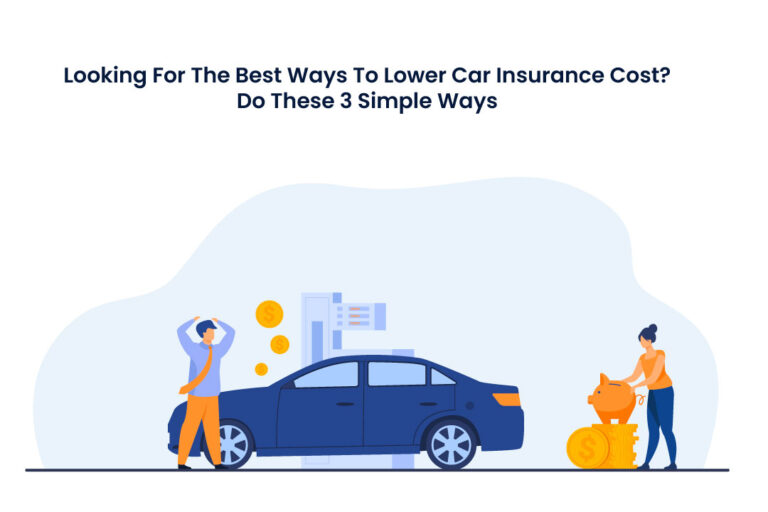
Choosing the right vehicle can significantly impact your auto insurance premiums. Factors like the car’s make, model, safety features, and even modifications all play a role in determining your insurance cost. Understanding these factors can help you save money in the long run. This section will delve into the specifics of how your vehicle choices affect your insurance rates.Vehicle type, make, and model directly influence insurance premiums.
Insurance companies assess risk based on historical claims data for specific vehicles. Sports cars, for instance, tend to have higher insurance rates due to their higher performance capabilities and associated risk of accidents. Conversely, smaller, fuel-efficient vehicles often come with lower premiums. The make and model also factor in; some manufacturers have a better safety record than others, influencing insurance costs.
Insurance Cost Differences Based on Vehicle Type, What are the best ways to save money on auto insurance premiums
The table below illustrates the potential difference in annual insurance premiums for various vehicle types. These are illustrative examples and actual costs will vary based on location, driver profile, and coverage.
| Vehicle Type | Estimated Annual Premium (Low) | Estimated Annual Premium (Medium) | Estimated Annual Premium (High) |
|---|---|---|---|
| Compact Car | $800 | $1200 | $1600 |
| Sedan | $900 | $1350 | $1800 |
| SUV | $1000 | $1500 | $2000 |
| Sports Car | $1500 | $2250 | $3000 |
Impact of Safety Features on Premiums
Vehicles equipped with advanced safety features generally attract lower insurance premiums. These features, such as anti-lock brakes (ABS), electronic stability control (ESC), airbags, and advanced driver-assistance systems (ADAS) like lane departure warning and automatic emergency braking, demonstrably reduce the likelihood and severity of accidents. Insurance companies recognize this and reward drivers with lower rates. For example, a car with a five-star safety rating from a reputable organization will likely have a lower premium than a car with a lower rating.
Effect of Vehicle Modifications on Insurance Rates
Modifying your vehicle, especially with performance upgrades, can significantly increase your insurance premiums. Adding a turbocharger, supercharger, or other performance enhancements increases the vehicle’s power and speed, leading to a higher perceived risk. Similarly, modifications affecting the vehicle’s appearance, such as aftermarket body kits or custom paint jobs, might also influence premiums, though typically to a lesser extent than performance modifications.
Saving on auto insurance premiums involves smart choices like bundling policies, maintaining a good driving record, and opting for higher deductibles. But remember, insurance isn’t just about cars; understanding how to navigate claims is crucial for all your policies. For instance, check out this guide on what is the best way to file a claim for home insurance damage to see how a smooth claim process can save you money in the long run, just as much as proactive auto insurance strategies.
Ultimately, informed decisions across all your insurance needs are key to saving.
Insurance companies often require notification of modifications, and failure to do so could void your coverage in the event of an accident. The increased risk associated with modified vehicles translates directly into higher insurance costs.
Bundling Insurance Policies

Bundling your insurance policies, meaning combining multiple types of insurance under one provider, is a savvy strategy to potentially slash your overall premiums. Insurance companies often reward loyalty and efficiency by offering significant discounts when you consolidate your auto, home, renters, or life insurance needs into a single package. This streamlined approach simplifies your financial management and can lead to substantial savings.Bundling typically results in a discount ranging from 5% to 25%, depending on the insurer and the specific policies bundled.
This discount is applied to your total premium, making it a much more significant saving than you might initially anticipate. The exact amount you save will depend on your individual risk profile and the specific policies you choose to bundle. Let’s explore some common examples and compare the potential cost savings.
Examples of Bundled Insurance Packages and Associated Discounts
Many insurance companies offer various bundled packages. A common example is bundling auto insurance with homeowners or renters insurance. Imagine a homeowner with a $1,000 annual auto insurance premium and a $600 annual homeowners insurance premium. If the insurer offers a 15% discount for bundling these policies, the total savings would be $240 annually ($1,6000.15). This could increase to a larger discount if additional policies, such as life insurance, are included in the bundle.
Another example would be a renter bundling their auto insurance with their renters insurance. The percentage discount will vary by insurer and specific policy details. Some insurers might offer more comprehensive bundles that also include umbrella liability insurance, which protects you against significant liability claims. This would further increase the potential savings.
Saving money on auto insurance premiums involves careful comparison shopping and maintaining a clean driving record. However, understanding the fine print is crucial; check out this article on what are the hidden fees and charges in car insurance policies to avoid unexpected costs. By being aware of potential hidden fees, you can better negotiate premiums and secure the best possible rate for your coverage.
Comparison of Bundled versus Individual Policies
To illustrate the financial benefits of bundling, let’s consider a hypothetical scenario. Suppose an individual pays $1200 annually for auto insurance and $700 annually for homeowners insurance – a total of $1900. With a 10% bundle discount, their total annual cost would decrease to $1710 ($19000.90), resulting in a $190 annual saving. If the discount increases to 20%, the annual saving increases to $380.
These savings can add up significantly over several years. It’s crucial to compare quotes from multiple insurers to ensure you’re getting the best possible deal, as discounts and policy offerings can vary considerably. Always carefully review the policy details to understand exactly what coverage you are receiving. The key is to compare the total cost of bundled policies against the total cost of purchasing each policy individually to fully appreciate the financial advantages.
Utilizing Discounts and Programs
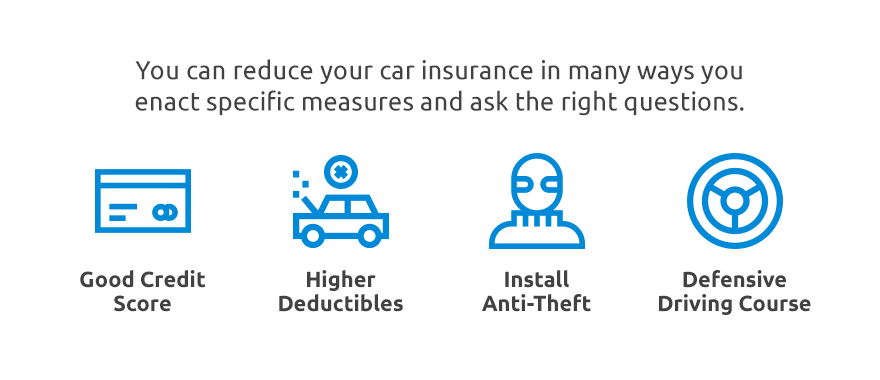
Unlocking significant savings on your auto insurance premiums often involves more than just careful shopping. Many insurance companies offer a range of discounts designed to reward safe driving habits, responsible choices, and proactive safety measures. Taking advantage of these programs can dramatically reduce your overall cost.Many insurers offer a variety of discounts to incentivize safe driving and responsible behavior.
These discounts can significantly lower your premiums, making insurance more affordable.
Good Student and Safe Driver Discounts
Maintaining good grades in school and a clean driving record are two of the easiest ways to save money on car insurance. Insurers often offer discounts to students with a high GPA, recognizing that academically successful individuals tend to be more responsible overall. Similarly, a spotless driving record, free of accidents and traffic violations, demonstrates responsible driving habits, making you a lower-risk driver and thus eligible for a discount.
For example, a driver with a perfect driving record for five years might receive a 15-20% discount compared to a driver with multiple accidents or speeding tickets. These discounts can vary considerably based on the insurer and the specific details of your driving history and academic performance.
Multi-Car and Multi-Policy Discounts
Insuring multiple vehicles under one policy with the same insurer typically results in a substantial discount. This bundling demonstrates loyalty and reduces administrative costs for the insurance company. Similarly, bundling your auto insurance with other types of insurance, such as homeowners or renters insurance, often leads to further savings. The discount percentage can vary but usually ranges from 10% to 25% or more, depending on the insurer and the specific policies bundled.
For instance, insuring two cars and a homeowner’s policy together might result in a 20% discount on the auto insurance premiums.
Loyalty Programs and Long-Term Savings
Staying with the same insurance provider for an extended period can unlock significant savings through loyalty programs. Many insurers reward long-term customers with reduced premiums, reflecting their consistent business and reduced risk associated with a known client. The discounts offered through loyalty programs can vary greatly depending on the company and length of coverage. Some companies may offer a small percentage discount annually for continuous coverage, while others may offer more substantial discounts after a certain number of years.
For example, a driver who has been with the same insurer for ten years might receive a 10% discount, while a driver with 20 years of continuous coverage could receive a 20% discount or even more.
Discounts for Safety Devices
Installing safety devices in your vehicle can also lead to lower premiums. Anti-theft systems, for instance, significantly reduce the risk of theft, a major factor in insurance costs. Similarly, some insurers offer discounts for vehicles equipped with advanced safety features like anti-lock brakes (ABS), electronic stability control (ESC), and airbags. The specific discounts offered for safety devices vary based on the insurer and the type of device installed.
However, these discounts can be substantial, potentially saving you hundreds of dollars annually. A car equipped with a comprehensive anti-theft system and other safety features might qualify for a 5-10% discount or even more, depending on the insurer’s policy.
Paying Your Premiums on Time

Paying your auto insurance premiums on time is crucial for maintaining your coverage and avoiding unnecessary financial penalties. Late payments can significantly impact your insurance costs and even lead to policy cancellation, leaving you vulnerable and potentially facing legal repercussions. Understanding the consequences of late payments and exploring convenient payment options can save you money and stress in the long run.Late payment penalties vary depending on your insurance provider and the specifics of your policy.
Common penalties include late fees, which can range from a few dollars to a substantial percentage of your premium. Repeated late payments can lead to higher premiums in the future, as insurers view this as a higher risk. In some cases, your policy may even be canceled altogether, requiring you to secure new coverage, which can be difficult and more expensive, especially with a history of late payments.
Imagine the hassle of finding a new insurer and potentially facing a lapse in coverage during the transition. This could lead to financial repercussions if you were involved in an accident during that period.
Late Payment Penalties
Insurers typically assess late fees for payments received after the grace period, usually around 10-15 days after the due date. These fees can range from $10 to $50 or more, depending on the insurer and the amount of the premium. Beyond the immediate fee, late payments can negatively impact your credit score, making it more difficult and expensive to secure loans or other financial products in the future.
Repeated instances of late payments can also result in your insurance premium increasing substantially, sometimes doubling or even tripling your monthly payments. In extreme cases, non-payment can lead to policy cancellation, leaving you uninsured and potentially liable for significant costs in the event of an accident. For example, a driver with a consistently late payment record might find their renewal premium increased by 20-30%, adding hundreds of dollars to their annual cost.
Benefits of Automatic Payments
Setting up automatic payments offers several advantages. It eliminates the risk of late payments and associated penalties. Many insurers offer discounts for automatic payments, which can amount to a significant saving over the policy term. Automatic payments simplify your financial management by eliminating the need to remember due dates and manually process payments. For example, a 5% discount on a $1200 annual premium translates to a $60 saving per year.
This seemingly small amount adds up over several years, potentially covering the cost of a small car repair or even a tank of gas.
Payment Options and Their Impact
Several payment options are available, each impacting your overall cost and convenience. Many insurers allow for online payments through their websites or mobile apps, often offering the option of automatic payments from your bank account or credit card. Others accept payments via mail, but this method carries the risk of late payments due to postal delays. Some insurers also partner with payment processors to offer alternative methods, such as payment through third-party apps or via phone.
While the core cost of the insurance premium remains the same regardless of the payment method, the choice of payment method influences the likelihood of incurring late fees and potentially accessing discounts. Choosing automatic payments often provides a discount, making it the most cost-effective and convenient option. Manual payments, while offering flexibility, carry the risk of late fees and potentially increased premiums in the future.
Considering Usage-Based Insurance: What Are The Best Ways To Save Money On Auto Insurance Premiums
Usage-based insurance (UBI), also known as pay-as-you-drive insurance, is revolutionizing the auto insurance landscape. Instead of relying solely on traditional factors like age, location, and vehicle type, UBI programs analyze your actual driving habits to determine your premiums. This innovative approach can lead to significant savings for safe and responsible drivers.UBI programs function by using a telematics device, often a small plug-in device or a smartphone app, to track various aspects of your driving.
This data, which is usually anonymized to protect your privacy, is then used to assess your driving behavior. Factors like speed, acceleration, braking, mileage, and even time of day are analyzed to create a personalized risk profile. The more responsible your driving, the lower your premiums are likely to be.
Potential Savings Compared to Traditional Policies
The potential savings with UBI compared to traditional policies can be substantial, particularly for drivers with excellent driving records. While savings vary depending on the insurer and the individual’s driving habits, many UBI programs offer discounts ranging from 10% to 40% or even more. For instance, a driver with a consistently safe driving record might see their premium reduced by 25% compared to a traditional policy, saving hundreds of dollars annually.
Conversely, drivers with risky driving habits might see higher premiums than a traditional policy, reflecting the increased risk they pose. It’s crucial to carefully compare quotes from both UBI and traditional insurers to determine which option is most beneficial.
Factors Influencing UBI Premium Calculations
Several key factors influence how UBI programs calculate your premiums. These include:
- Mileage: The total distance driven is a major factor. Lower mileage generally translates to lower premiums, as less time on the road reduces the likelihood of accidents.
- Speed: Frequent speeding or excessive speeds significantly increase your risk score and premiums. Maintaining safe and legal speeds is crucial for keeping costs down.
- Hard Braking and Acceleration: Sudden stops and rapid acceleration indicate aggressive driving, increasing the risk of accidents and therefore premiums.
- Time of Day: Driving during peak hours or at night often involves increased traffic and higher risk, potentially leading to higher premiums.
- Driving Location: Some areas are statistically riskier than others due to higher accident rates. Driving in high-risk areas might impact your premiums.
It’s important to note that while UBI programs offer potential savings, they also monitor your driving behavior more closely than traditional policies. Therefore, maintaining a consistently safe driving record is essential to maximizing the benefits of UBI.
